Physical Address
304 North Cardinal St.
Dorchester Center, MA 02124
Early surgical treatment (ideally immediate primary repair) of flexor tendon injury is preferred, but repair within 1 to 2 weeks of injury still produces good results.
Surgical repair is essential for complete tendon lacerations.
See specific indications under each zone of injury.
In partial tendon injuries, associated symptoms such as triggering, entrapment, or delayed rupture can occur.
Partially injured tendons involving less than 60% of a cross-sectional area do not need to be repaired, but frayed ends may be debrided to prevent triggering. Patients with greater than 60% laceration will benefit from reinforcement with a core and a running epitendinous suture (see “General Suture Repair”).
Digits with severely damaged soft tissue may need to have skin coverage and vascularity addressed before flexor tendon repair. If three or more tissue systems (i.e., tendon, skin, vessels, nerves, bones/joints) are compromised, severe limitation in finger function is likely and the patient may be better served with a digital amputation.
Flexor tendon lacerations may not need repair in the setting of fixed interphalangeal joint contractures.
Continuity of the flexor digitorum superficialis (FDS) tendon is evaluated by asking the patient to flex the finger voluntarily while the examiner holds the metacarpophalangeal (MCP) and interphalangeal (IP) joints of the uninvolved fingers in full extension ( Fig. 78.1A ). FDS of the small finger may be difficult to isolate and is absent in a percentage of the normal population.
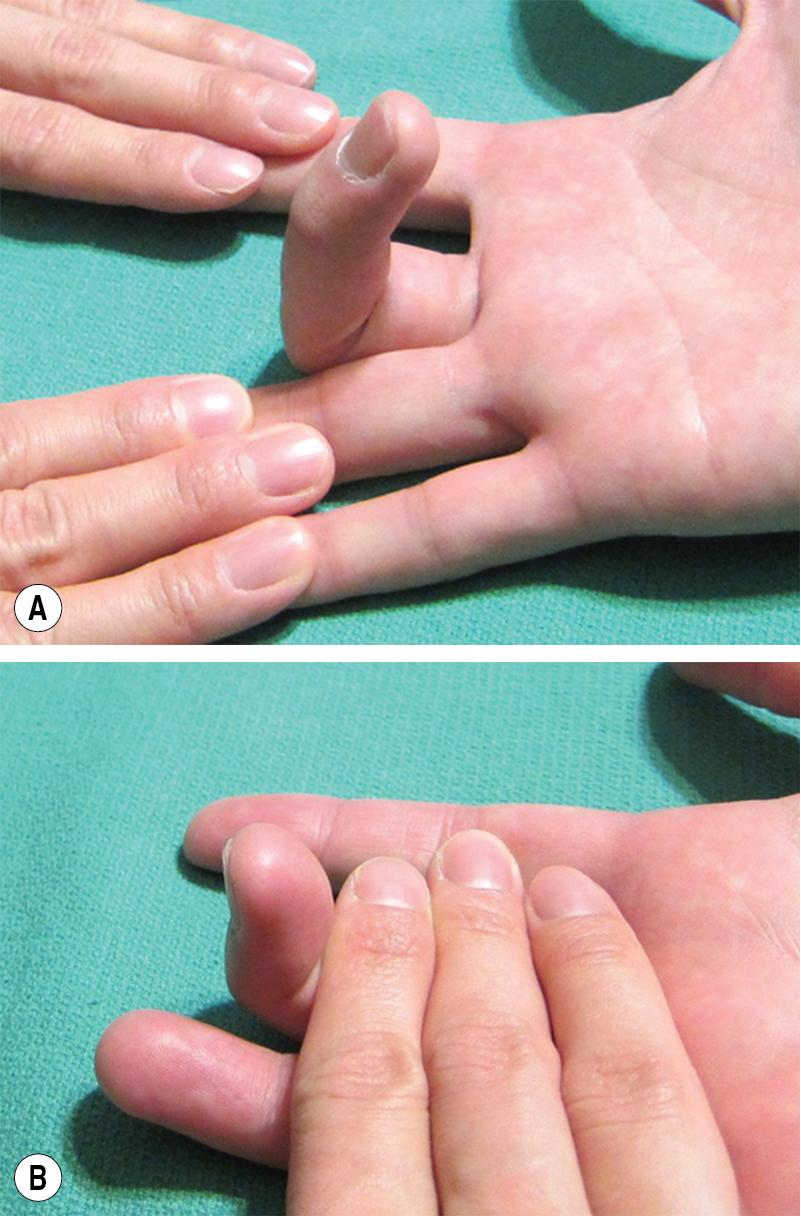
Continuity of the flexor digitorum profundus (FDP) tendon is evaluated by asking the patient to flex the distal interphalangeal (DIP) joint while the examiner holds the proximal interphalangeal (PIP) joint (see Fig. 78.1B ) in full extension.
The flexor pollicis longus (FPL) tendon is also evaluated by asking the patient to flex the IP joint of the thumb.
A plain radiograph is required to exclude a fracture, foreign body, or any other bony etiologies.
An associated distal phalanx avulsion fracture may indicate the location of the proximal end of the tendon if the bony fragment remains attached to the tendon.
The FDS tendons insert onto the base of the middle phalanx and function primarily to flex the finger at the PIP joint with eventual flexion at the MCP joint. The FDP tendons insert onto the base of the distal phalanx to flex the finger at the DIP joints, with eventual flexion at the PIP and MCP joints. Intrinsic muscles of the hand are primarily responsible for initiating MCP joint flexion. The FDS tendon fibers decussate to form two slips, which wrap around the FDP tendon to insert on the middle phalanx at Camper’s chiasm ( Fig. 78.2 ).
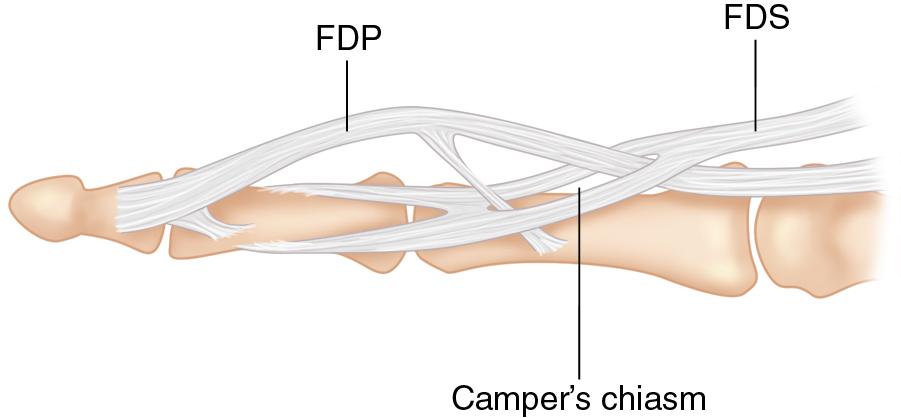
A commonly used classification of flexor tendon injury location was described by Kleinert ( Fig. 78.3 ).
Zone I is distal to the insertion of the FDS tendon.
Zone II extends from the proximal aspect of the A1 pulley to the FDS insertion. Zone II contains both FDS and FDP tendons as they pass through the fibro-osseous flexor tendon sheath together in the distal palm and digit. This area has been known as “no man’s land” because of historically poor results after tendon lacerations repairs. The tight tendon sheath in zone II may cause adhesion between the FDS and FDP tendons.
Zone III encompasses the palm of the hand proximal to the tendon sheath and distal to the transverse carpal ligament. Here, the lumbricals originate from the radial aspect of the respective FDP tendons.
Zone IV refers to the carpal tunnel. Isolated zone IV tendon injuries are rare because of osseous protection of the contents of the carpal tunnel by the hook of the hamate and the trapezium; their prominence often limits penetrating injuries from reaching the underlying tendons.
Zone V contains the flexor tendons and their musculotendinous junctions in the forearm proximal to the wrist crease.
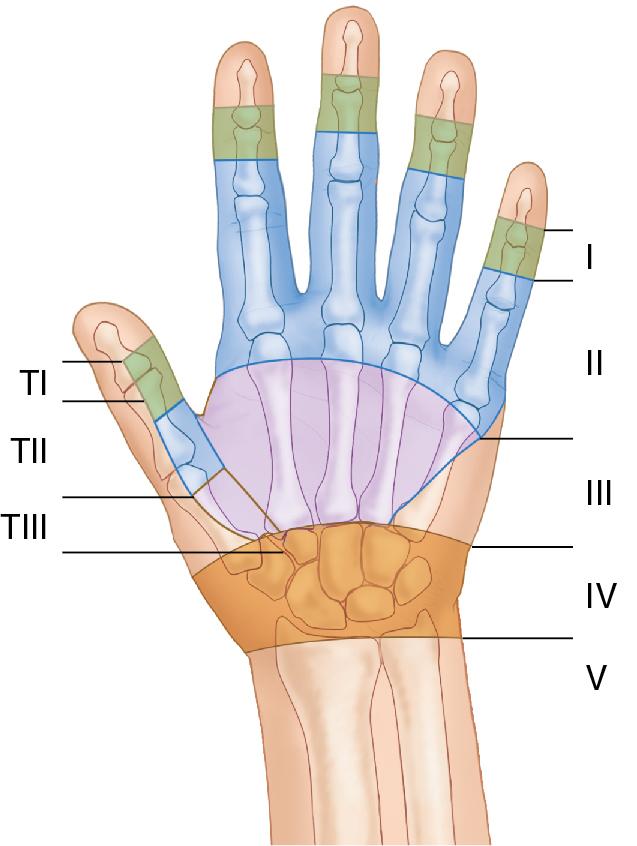
Repairs of lacerations in zones I to IV benefit from the wide-awake approach in select cooperative patients because the surgeon can confirm lack of gapping of the tendon repair and verify appropriate gliding of the tendon repair relative to the intact pulleys. In this approach, epinephrine-induced vasoconstriction can reduce bleeding without use of a pneumatic tourniquet. Usually, the wide-awake approach is performed without IV sedation.
For injuries in zone V, a field block or regional anesthesia is recommended.
The midaxial approach ( Fig. 78.4A ) is the preferred surgical approach to preserve normal tissue directly over the tendon sheath and to reduce wound tension with postoperative digital motion.
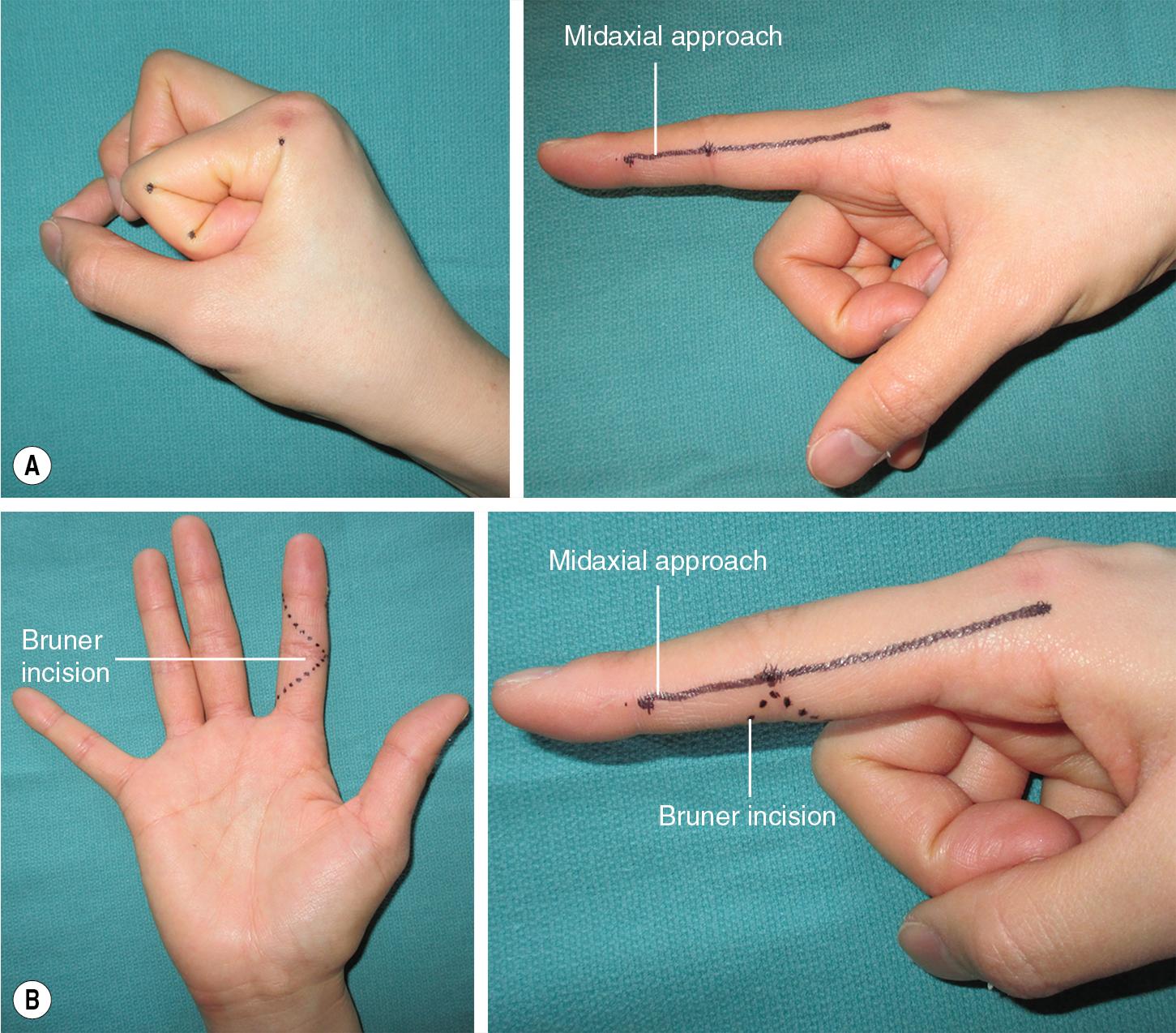
The Bruner incision (see Fig. 78.4B ) provides wide exposure and is commonly used. If the patient has had a previous oblique incision or laceration, it is often incorporated.
Suture type, suture caliber, the number of core suture strands crossing the repair site, core suture purchase, and the addition of an epitendinous suture all affect the strength of a tendon repair.
Classic two-strand suture methods (Kessler, modified Kessler, or Tajima techniques; Fig. 78.5 ) can be used, as well as newer multistrand suture methods ( Fig. 78.6 ).


Based on the caliber of the injured tendon, 3-0 or 4-0 sutures are chosen.
Tendon lacerations should be repaired with at least four-strand core suture techniques with an epitendinous repair ( Fig. 78.7 ) for early motion therapy. Repair tensile strength increases with a higher number of core strands across the repair site.
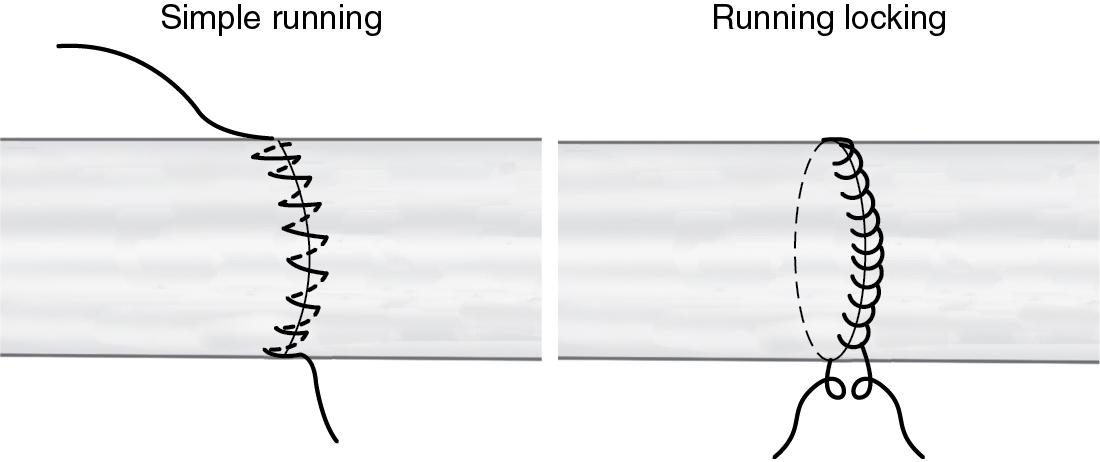
Ex vivo experiments have shown that “locking” core suture repair shows greater strength than “grasping” suture ( Fig. 78.8A–B ).
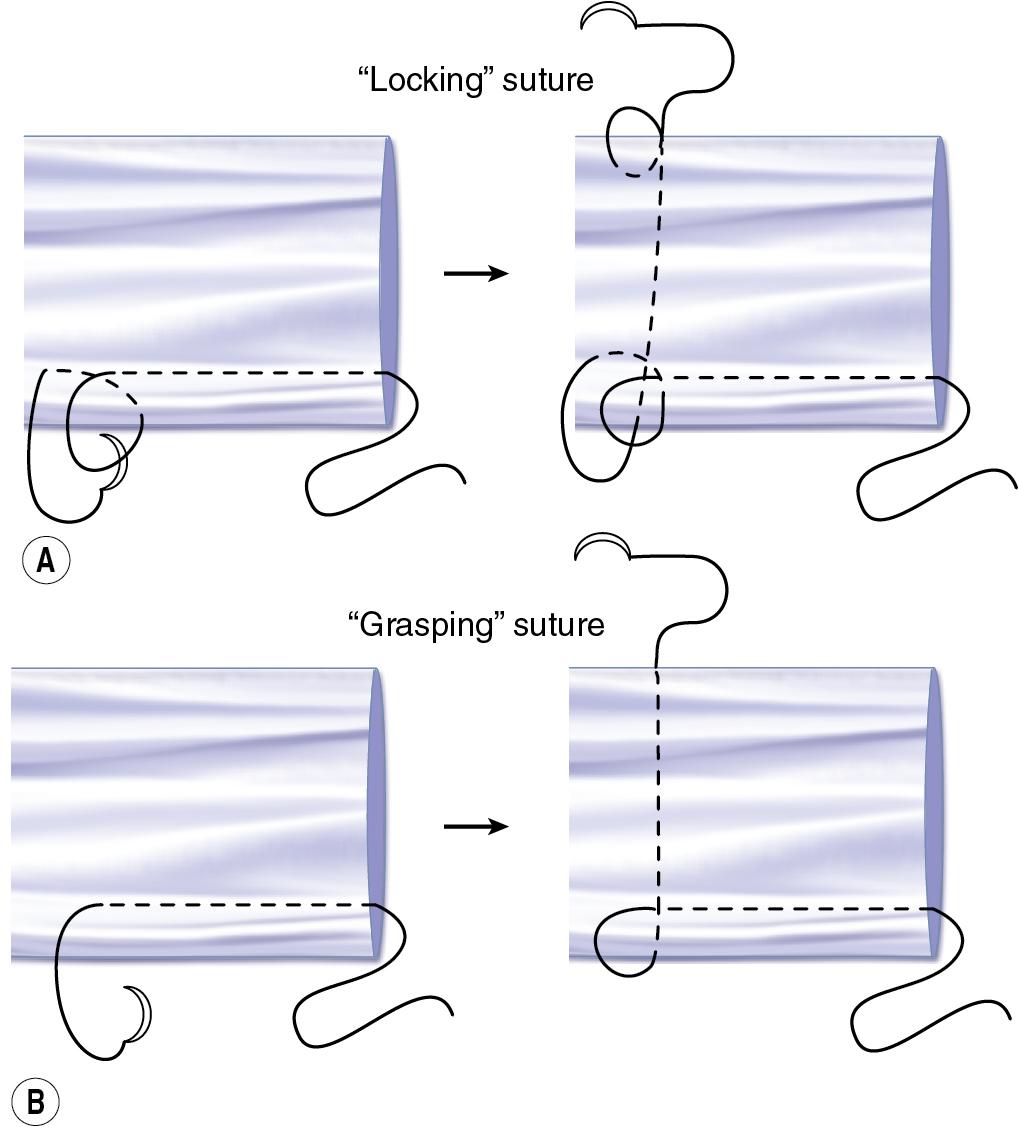
The epitendinous repair theoretically smooths the repair site to facilitate improved gliding, increases the strength of repair site by approximately 10% to 50%, and decreases adhesions of the repaired tendons.
The authors prefer a six-strand Tang repair (using a looped braided nylon suture [ Fig. 78.9A ] or a Tajima-Strickland suture [see Fig. 78.9B ] if a looped suture is not available). In addition, a running locking epitendinous suture of 6-0 nonabsorbable monofilament is added for all zone I and zone II repairs and at the surgeon’s discretion for more proximal zones if needed for added strength.
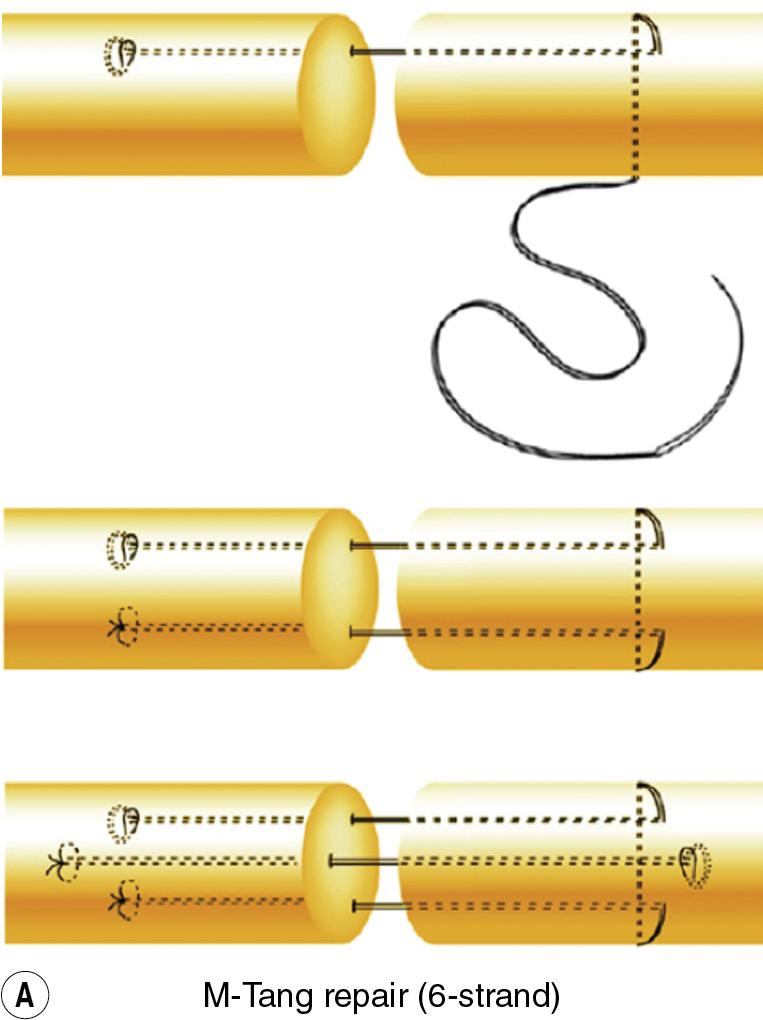
Become a Clinical Tree membership for Full access and enjoy Unlimited articles
If you are a member. Log in here